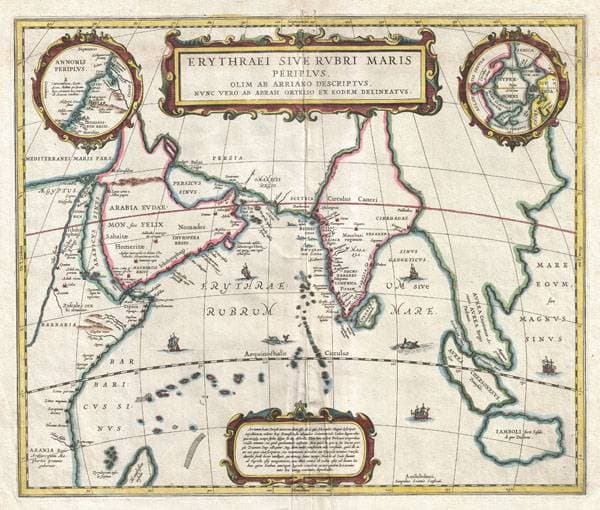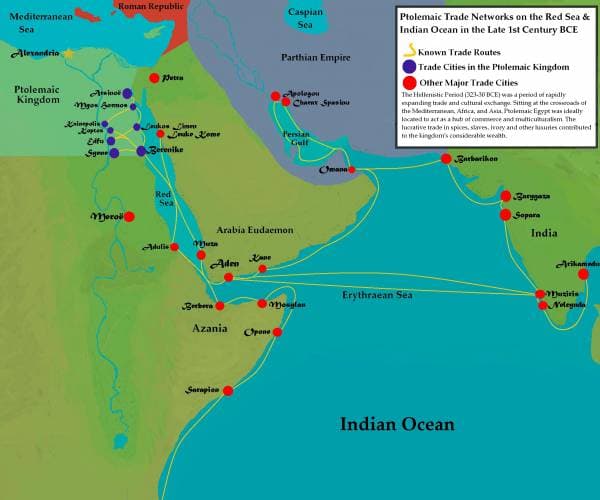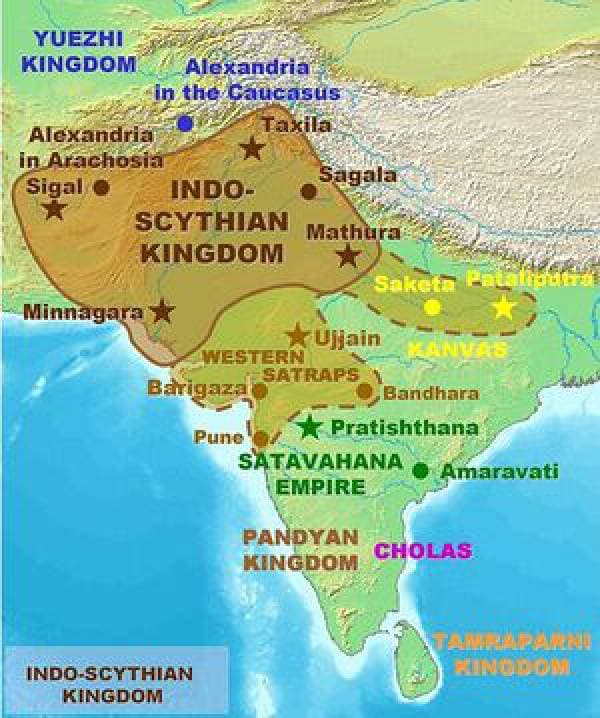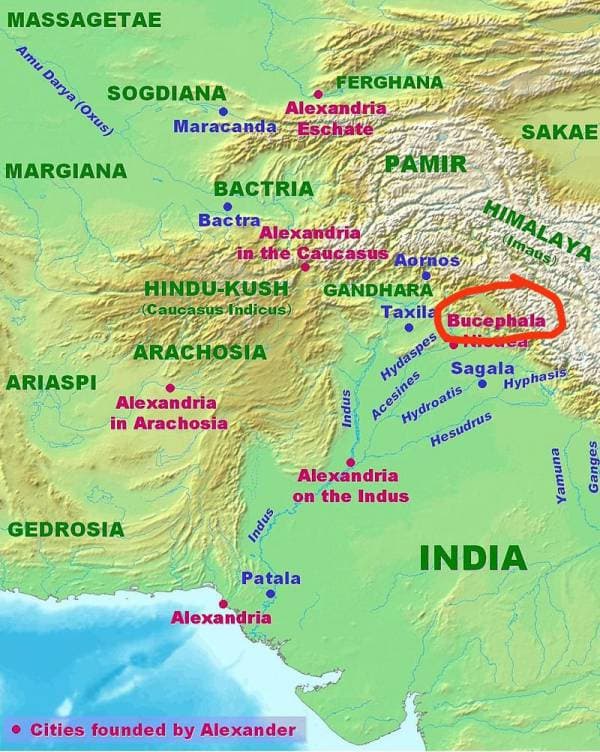Erythraean Sea
The following note will describe this important document on navigation and trading in the ancient world, with particular emphasis on Indian ports and regions described in it.

Periplus of the Erythraean Sea, or the ‘Periplus’, is also known as ’ Periplus Maris Erythraei’, is a logbook written by an unknown writer, which describes trading in the areas of Red Sea, Indian Ocean, Africa, Persian Gulf, Arabian sea including regions of Southern India. The commonly accepted date of this logbook of the ancient world is the first century AD. The author of the ‘Periplus’ is unknown but it seems to be a first-hand account of a person who is familiar with regions and knows a thing or two about navigation.
The name ‘Erytharaean’ is a maritime destination that included sea trade in the Indian Ocean and includes regions of the Gulf of Aden, and other seas located between the Arabian Sea and the Horn of Africa. Periplus’ credits a Greek merchant named Hippalus, who in c. 47 BCE, discovered the direct sailing route from the Red Sea to the Indian peninsula by using the monsoon winds. The monsoon winds used to be called ‘Hippalus’ in his honor.
Apart from the description of the regions of Arabia, the Horn of Africa, and other places, the document also the ports and the brisk commercial activity of the regions of India, like the regions of Sindh, Bharoach, Ujjain, and the regions of South India like Muziris, Kannur, etc.
Trade with the city of Barygaza, or Bharoach in present-day Gujarat is described extensively. Periplus mentions Nahapana (c. 124 AD) as ‘Nambanus’, who was the ruler of a branch of the Western Kshatrapas in the 2nd century AD.
“Beyond the gulf of Baraca ( Gulf of Kutch) is the port of Barygaza, and the coast of the country of Ariaca, which is the kingdom ruled by Nambanus and all of India’ – Periplus, section 41
“It is a fertile country yielding wheat, rice, sesame oil, clarified butter, and cotton. The metropolis of this country is Minnagara from where much cotton cloth is brought down to Barygaza.”
Bharuch or Barygaza was the principal distributing center of Western India, from where the merchandise brought from abroad was carried to inner regions.
Paithan (Pratisthana, in Maharashtra) situated ‘20 day march to the south of Baryagaza’, and ‘Tagara’, (Ter, Maharashtra) east of Paithan were two inland towns of great importance, of which Paithan sent into Bharuch goods like precious stones, Muslin, cotton, agri-produce, etc.
Other seaport towns mentioned in the ‘Periplus’ are Sopara, Kalliena (modern Kalyan), Semulla (Chembur) Mandogra (Mandad in Amravati district), Melizeigara (modern Jaigadh). To the South, three main places are mentioned, Tyndis, Muziris, and Nelkynda, from where ivory, pearl, silk, diamonds, pepper, spices, etc were exported to western ports. ‘Periplus’ also notes large Hindu ships off the coast of East Africa, Arabia, and Persian ports, and Hindu settlements on the North Coast of Socotra (in Yemen)
The Periplus also throws light on the shipping of the period. According to it, the inhabitants of the Coromandel coast traded in vessels of their own throughout the year. Some details are given regarding trade routes. The ships coming to India started from Myos Hormos or Berenica and sailed down the Red Sea to a place called Mouza. Then they followed the Arabian coast as far as Kane, passing onto Aden.

From Kane, the routes to India diverted, as some ships went towards Indus & Barygaza, and others went towards the Malabar coast. In all these voyages, the ships made use of monsoon winds, then called ‘Hippalos’, starting from Egypt in July.
Ujjain was also an important trading place. ‘Periplus’ describes Ujjain as ‘Ozene’, which ‘was a former royal capital’, and from where ‘all things needed for the welfare of the country like muslins, cotton, and other products were brought from this place.’ The ‘Periplus’ mentions ‘Minnagara’, which was a trading port at Indus, and thereafter a port of the same name near Narmada Delta, near Bharuch.

Lastly, the ‘Periplus’ describes ‘Bucaphelus Alexandria’, a city founded by Alexander in c. 326 BCE, named after his horse, Bucaphelus: “The country inland of Barygaza is inhabited by Aratti, Arachosii, Gandaraei and the people of Poclais, in which is Bucephalus Alexandria.”

Source: https://twitter.com/PrasunNagar/status/1489986584879722502